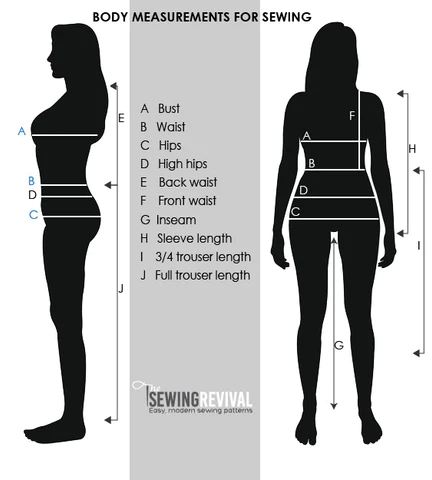- You have no items in your shopping cart
- Continue Shopping

Choosing the right sizes for your clothing is essential for comfort and confidence in your appearance. Here are some tips on how to choose good sizes for yourself:
- Know Your Measurements: Take accurate measurements of your body. Key areas to measure include your bust, waist, hips, and inseam for pants or dresses. Knowing your measurements will help you select the right size when shopping online or in stores.
- Consult Size Charts: Most clothing brands provide size charts on their websites or in-store. These charts will typically correlate your measurements with their size recommendations. Refer to these charts to determine the best size for each specific item.
- Understand Sizing Variations: Keep in mind that clothing sizes can vary between brands and even between different styles from the same brand. Don’t assume that your size is the same across the board. Always check the size chart for each item.
- Consider Your Body Shape: Take into account your body shape when selecting clothing sizes. Some styles may fit better based on your body type. For example, if you have an hourglass figure, you may prefer dresses that cinch at the waist.
- Read Reviews: When shopping online, read customer reviews for insights into how a particular item fits. Many reviewers will share their height, weight, and body shape, making it easier to gauge how a garment might fit you.
- Try Before You Buy: If possible, try on clothing before purchasing. This is especially important for items like jeans, bras, and formal dresses. Trying on clothes ensures they fit well and are comfortable.
- Consider Alterations: If you find a piece of clothing that you love but it’s slightly too large or too long, consider alterations. Tailoring can make a significant difference in how well a garment fits and flatters your body.
- Pay Attention to Fabric: Different fabrics have different amounts of stretch and drape. Keep in mind that a stretchy fabric may allow you to size down, while a non-stretchy fabric might require a slightly larger size.
- Don’t Fixate on the Number: Remember that clothing sizes are just labels. What’s most important is how the clothing fits and makes you feel. Don’t be discouraged if you need a different size in one brand compared to another; it’s entirely normal.2.
- Trust Your Comfort: Ultimately, your comfort is paramount. If a garment feels too tight, too loose, or uncomfortable in any way, it’s probably not the right size for you. Choose sizes that allow you to move freely and feel confident.
| Height (inches) | Weight (lbs) | Waist (inches) | Shoulder Circumference (inches) | Dress Size |
|—————–|————–|—————-|——————————-|————|
| 4’10” – 5’0″ | 90 – 110 | 22 – 25 | 13 – 15 | XS |
| 5’1″ – 5’3″ | 105 – 125 | 24 – 27 | 14 – 16 | S |
| 5’4″ – 5’6″ | 120 – 140 | 26 – 29 | 15 – 17 | M |
| 5’7″ – 5’9″ | 135 – 155 | 28 – 31 | 16 – 18 | L |
| 5’10” – 6’0″ | 150 – 170 | 30 – 33 | 17 – 19 | XL |
| Above 6’0″ | 165 – 185 | 32 – 35 | 18 – 20 | XXL |
Choosing Dresses
When choosing a nice dress, such as casual, evening, or even wedding, it is recommended to pay special attention to the fitting process, and not focus solely on standard sizes. Wedding dresses often have unique cuts and designs, and sizes can vary from standard everyday wear. The designers from the well-known Kyiv fashion brand Catarina Kordas recommend considering the possibility of individual tailoring. Having a dress made to order is a great way to ensure that it best suits your needs and preferences.1.
In summary, choosing the right clothing sizes involves a combination of knowing your measurements, consulting size charts, considering your body shape, and being open to variations between brands and styles. Prioritize comfort and confidence in how the clothing makes you feel, rather than fixating on the size label.
1. Source[Catarina Kordas Design]
2. Source [TheSewingRevival]
